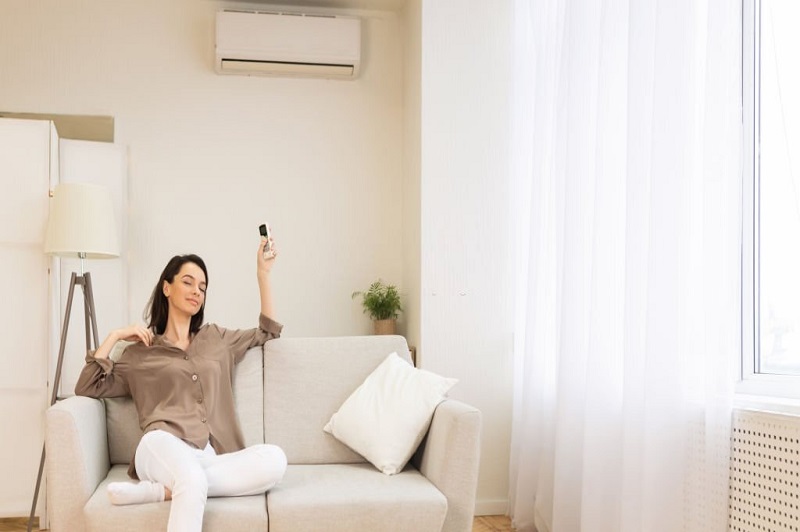As temperatures around the globe continue to rise, the demand for efficient and cost-effective air conditioning solutions has never been greater. One such solution that has gained immense popularity in recent years is the split air conditioner. But what exactly are split air conditioners, and what benefits do they offer? Moreover, how can you ensure a smooth installation process?
This comprehensive guide aims to answer these questions and more, helping you understand the benefits of split air conditioners and guiding you through the installation process.
1. Definition and Function of Split Air Conditioners
Split air conditioners, as the name suggests, consist of two separate units: an indoor unit and an outdoor unit. The indoor unit is responsible for cooling the air and distributing it throughout the room, while the outdoor unit contains the compressor, condenser, and other essential components. These two units are connected by refrigerant lines, which allow the system to transfer heat from the indoor space to the outdoor environment.
One of the main advantages of split air conditioners is their versatility. They can be used to cool a single room or multiple rooms, depending on the system’s cooling capacity. Moreover, because the compressor and condenser are located outside, split air conditioners tend to be quieter and more energy-efficient than traditional window or portable air conditioners.
2. Benefits of Split Air Conditioners
#. Energy Efficiency
Split air conditioners are known for their energy efficiency, thanks to their inverter technology. This feature allows the system to adjust its cooling capacity based on the room’s temperature, ensuring that the unit operates at its most efficient level. As a result, split air conditioners can save you money on your energy bills while still providing consistent and comfortable cooling.
#. Quiet Operation
One of the most significant advantages of split air conditioners is their quiet operation. Because the noisy components, such as the compressor and condenser, are located outside, the indoor unit can operate at a much lower noise level. This makes split air conditioners an ideal choice for bedrooms, living rooms, and other areas where noise can be disruptive.
#. Easy Maintenance
Maintaining a split air conditioner is relatively simple, as the indoor unit is easily accessible for cleaning and filter replacement. Additionally, because the outdoor unit is separate, it is less likely to accumulate dirt and debris, which can lead to reduced efficiency and performance.
#. Air Purification
Many split air conditioners come with built-in air purification features, such as HEPA filters, which can remove allergens, dust, and other pollutants from the air. This not only improves indoor air quality but can also benefit individuals with allergies or respiratory issues.
#. Cost-Effective Cooling
While the initial cost of a split air conditioner may be higher than that of a window or portable unit, the long-term savings in energy bills and reduced maintenance costs can make it a more cost-effective option in the long run.
3. Installation Process
#. Choosing the Right Unit
Before installing a split air conditioner, it’s essential to choose the right unit for your space. Consider factors such as room size, insulation, and the number of occupants to determine the appropriate cooling capacity. Additionally, look for energy-efficient models with a high SEER (Seasonal Energy Efficiency Ratio) rating to ensure optimal performance and energy savings.
#. Professional Installation
While it may be tempting to attempt a DIY installation, it’s highly recommended to hire a professional HVAC technician to install your split air conditioner. This ensures that the unit is installed correctly, safely, and in compliance with local building codes and regulations.
#. Preparing the Space
Before the installation process begins, clear the area where the indoor and outdoor units will be installed. This may involve removing any furniture or obstacles and ensuring that there is adequate space for the units and their associated components.
#. Installing the Indoor and Outdoor Units
The indoor unit should be mounted on an interior wall, preferably near the center of the room for optimal air distribution. The outdoor unit should be placed on a flat, stable surface, such as a concrete pad, and should be located away from direct sunlight and any sources of heat or debris.
#. Connecting the Units
Once the indoor and outdoor units are installed, the technician will connect them using refrigerant lines, electrical wiring, and a condensate drain line. These connections must be made carefully and securely to ensure proper system operation and prevent leaks or other issues.
#. Testing the System
After the units are connected, the technician will test the system to ensure that it is operating correctly and efficiently. This may involve checking the refrigerant levels, electrical connections, and overall system performance.
4. Maintenance and Cleaning
#. Regular Cleaning
To keep your split air conditioner running efficiently, it’s essential to clean the indoor unit regularly. This involves removing the front panel and cleaning the air filters, evaporator coils, and other components with a soft brush or cloth.
#. Filter Replacement
Depending on the type of filters used in your split air conditioner, you may need to replace them every few months to maintain optimal air quality and system performance. Consult your owner’s manual for specific filter replacement guidelines.
# Professional Maintenance
In addition to regular cleaning and filter replacement, it’s a good idea to schedule annual professional maintenance for your split air conditioner. This may involve checking the refrigerant levels, inspecting the electrical components, and cleaning the outdoor unit.
Conclusion
Split air conditioners are an energy-efficient, quiet, and versatile cooling solution that offers many benefits over traditional window or portable air conditioners. By understanding the installation process and committing to regular maintenance, you can enjoy years of comfortable, cost-effective cooling with a split air conditioning system. Whether you’re looking to cool a single room or an entire home, a split air conditioner is a smart investment that can improve your indoor comfort and save you money in the long run.




